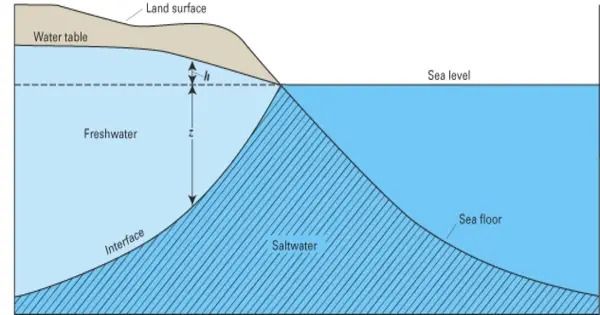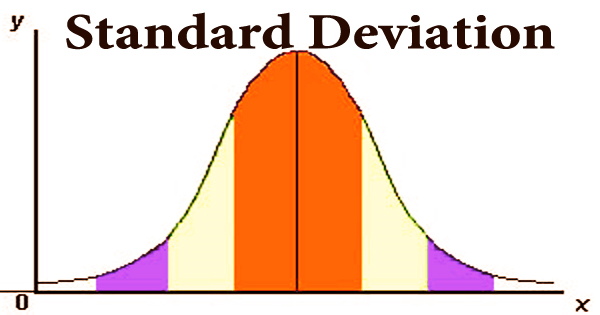Saltwater intrusion is a phenomenon in which saltwater water from the ocean infiltrates freshwater aquifers or surface water bodies. The flow of saline water into freshwater aquifers has the potential to degrade groundwater quality, including drinking water supplies, among other repercussions. It is frequently caused by the over-pumping of groundwater from coastal aquifers, which generates a pressure gradient that allows seawater to enter the freshwater system.
Saltwater intrusion can occur naturally in coastal aquifers due to the hydraulic link between groundwater and the ocean. Because saline water contains more minerals than freshwater, it is denser and has more water pressure. As a result, saltwater may push inland beneath freshwater. In other topologies, submarine groundwater discharge can push fresh water into salt water.
Certain human activities, including groundwater pumping from coastal freshwater wells, have exacerbated saltwater intrusion in many coastal regions. Water extraction lowers the amount of fresh groundwater, reducing water pressure and allowing saltwater to migrate further inland. Navigation canals, as well as agricultural and drainage channels, contribute to saltwater intrusion by allowing saltwater to travel inland. Climate change causes sea level rise, which adds to saltwater intrusion. Saltwater intrusion can also be exacerbated by major events such as hurricane storm surges.
Several factors contribute to saltwater intrusion:
- Over-extraction of groundwater: This is the primary cause. When too much freshwater is pumped out of coastal aquifers for agricultural, industrial, or municipal use, it reduces the pressure in the aquifer, allowing saltwater to move in from adjacent coastal areas.
- Sea level rise: Rising sea levels due to climate change exacerbate saltwater intrusion. Higher sea levels increase the pressure gradient between saltwater and freshwater, making it easier for seawater to infiltrate freshwater systems.
- Land subsidence: Human activities such as groundwater extraction, oil and gas extraction, and sediment compaction can cause land to sink (subsidence). This can also contribute to saltwater intrusion by reducing the elevation of coastal freshwater bodies relative to sea level.
- Geological factors: The geological structure of the coastal area, such as the permeability of rock and soil layers, can affect the vulnerability of freshwater aquifers to saltwater intrusion.
Saltwater intrusion has significant environmental, economic, and social implications:
- Ecological impact: Intrusion of saltwater can harm freshwater ecosystems by disrupting the habitats of plants and animals adapted to freshwater conditions.
- Agricultural impact: Saltwater intrusion can degrade soil quality and reduce the availability of freshwater for irrigation, leading to decreased agricultural productivity.
- Economic impact: Coastal communities reliant on freshwater resources for drinking water, agriculture, and industry may face increased costs for desalination or alternative water sources.
- Social impact: Saltwater intrusion can cause conflicts over water supplies among different users, as well as the displacement of people who rely on freshwater for a living.
To manage saltwater intrusion, a variety of techniques must be used, including sustainable groundwater management practices, water demand reduction, the protection and restoration of coastal wetlands and buffers, and the implementation of engineering solutions such as groundwater barriers and injection wells. It also needs to address the underlying causes of saltwater intrusion, such as unsustainable water use and climate change.
















